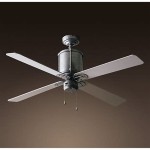Should Ceiling Be Darker Than Walls? Exploring Essential Considerations
When it comes to interior design, the relationship between ceiling and wall colors is a crucial aspect that can significantly impact the overall ambiance and perception of a space. While there are no set rules, the question of whether the ceiling should be darker than the walls has been pondered by many homeowners and designers alike. This article delves into the key factors to consider when making this decision, providing insights and practical advice to help you create a harmonious and visually appealing living environment.
1. Room Size and Lighting
The size of the room and the amount of natural light it receives play a significant role in determining the appropriate color scheme. In small or poorly lit rooms, using a darker ceiling can make the space feel even more cramped and gloomy. Conversely, in large or well-lit rooms, a darker ceiling can add depth and create a more intimate atmosphere. By considering the existing lighting conditions, you can make a more informed decision about the optimal ceiling color.
2. Architectural Features
Another aspect to consider is the presence of architectural features such as moldings, beams, or vaulted ceilings. If the ceiling has intricate details or high ceilings, painting it a darker color can help accentuate these features and draw attention upward. However, if the ceiling is plain or has low height, a lighter color might be a better choice to avoid making the room feel top-heavy.
3. Color Psychology
Colors evoke different psychological responses, and this should be taken into account when choosing ceiling and wall colors. Darker colors, such as navy blue, charcoal, or deep green, can create a sense of coziness and intimacy, making them suitable for bedrooms, dens, or libraries. Conversely, lighter colors, such as white, ivory, or light gray, have a more airy and expansive feel, ideal for living rooms, kitchens, or hallways.
4. Furniture and Accessories
The colors and styles of your furniture and accessories can also influence the decision. If your room has dark-colored furniture or heavy drapes, a darker ceiling can create a cohesive and dramatic effect. However, if the furnishings are mostly light-colored or minimalist, a lighter ceiling can provide a brighter and more balanced contrast.
5. Personal Preference
Ultimately, the choice of whether or not to have a darker ceiling than the walls is a matter of personal preference. There is no right or wrong answer, and what looks good in one room may not work in another. Trust your instincts and go with the colors that create the atmosphere you desire. If you're unsure, experiment with different shades and see what feels most comfortable and aesthetically pleasing.
6. Tips for Darker Ceilings
If you decide to go with a darker ceiling, here are some tips to ensure it looks its best:
- Use a high-quality paint with a good sheen. This will help reflect light and make the ceiling appear less gloomy.
- Consider painting the trim and moldings a lighter color to create contrast and define the architectural features.
- Add plenty of lighting, both natural and artificial, to brighten the space.
- Choose furnishings and accessories in lighter colors to balance out the darker ceiling.
- Avoid using too much dark furniture or heavy drapes, as this can make the room feel overwhelming.
7. Tips for Lighter Ceilings
If you opt for a lighter ceiling, here are some tips to maximize its impact:
- Use a paint color that complements the wall color and creates a harmonious flow.
- Consider adding architectural details, such as crown molding or beams, to add visual interest to the ceiling.
- Use light fixtures that provide both ambient and task lighting to enhance the brightness of the space.
- Accessorize the room with artwork, mirrors, or plants to reflect light and make the ceiling appear even lighter.
- Avoid painting the trim and moldings a darker color, as this can make the ceiling look lower.
In conclusion, the decision of whether or not to have a ceiling darker than the walls depends on a variety of factors, including room size, lighting, architectural features, color psychology, furniture, accessories, and personal preference. By carefully considering these aspects, you can create a visually appealing and comfortable living space that reflects your unique style and needs.

4 Reasons To Paint Your Ceiling Dark De Manor Farm By Laura Janning

Painting The Ceiling A Little Darker And Glossier Young House Love

Paint Your Ceiling Dark And Reasons Why You Should Artsy Rule

5 Ways To Paint Your Ceiling In 2024 Big Dog Painting

What Color Should You Paint Your Ceiling Plank And Pillow

Painting The Ceiling A Little Darker And Glossier Young House Love

Nursery Update Why I Chose To Paint The Ceiling Dark
When To Match Your Ceiling Walls Angled Ceilings Designed
:strip_icc()/living-room-high-ceiling-fireplace-b175ca6aad2a4cc5873b95d6f7b46947.jpg?strip=all)
9 Ceiling Paint Color Trends Designers Love That Aren T White

Painted Ceiling To Match The Trim Darker Than Wall Color Help Make Large Beach Style Living Room Recessed Lighting Placement Taupe
Related Posts








